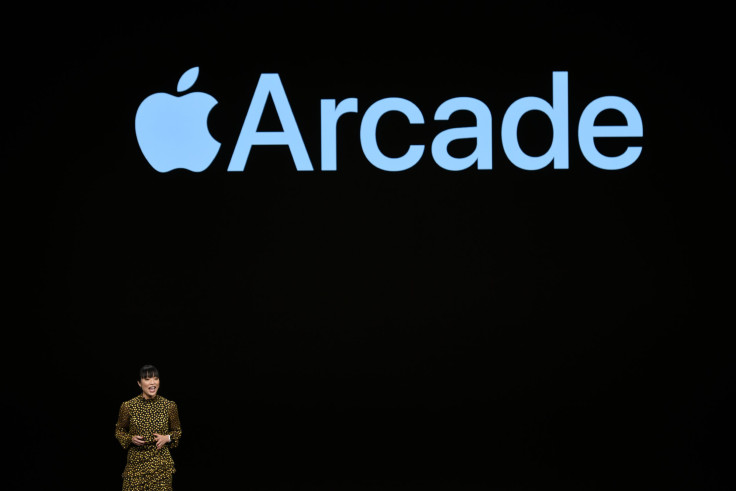What Apple's Arcade Launch Means For The Game Industry

Following Google’s launch of its streaming service Stadia, and ahead of Microsoft’s touted announcement at E3, Apple's launch of its game subscription service Arcade feels like we’re at an inflection point in the mobile game industry. As successively more tech giants continue to jump on the games bandwagon, it’s clear just how lucrative, mainstream and strategic the game industry has become — and the numbers stack up too, with game revenue already surpassing TV and box office revenue and on track to be a $180 billion industry by 2021.
What does this latest development actually mean for the industry, and how wide will its impact be? It’s hard to know exactly with so many unknowns, like the pricing of the service or what the business model will be for developers, but the scope of the impact will ultimately come down to how (and if) the economics work.
The story so far
The ad-free, subscription-based model has worked for industries like music and entertainment because they have traditionally been based on one-time purchases. But the gaming world, and mobile games in particular, are different because of the interactive nature of games which are able to generate regular revenue over time through in-app purchases, and increasingly, through ads. Risking the annual revenue made through IAPs in exchange for a monthly subscription, seems unlikely for a King or Supercell.
In comes Arcade
Apple seems to be pitching itself to paid games struggling to rise above the noise (and clutter, Apple seems to imply) of the free ecosystem: “Paid games are often critically acclaimed and beloved by the people who play them, but competing with free is hard, so even the best of these games have only reached a smaller audience,” the press release goes. Apple seems to be making a play for curation, control and quality which is entirely in line with its wider brand values and aesthetic.
Developers of intricately-crafted hard and midcore games will be able to connect with engaged users through Arcade — users who demonstrably are looking for highly-immersive game experiences which can be enjoyed offline. These users are already used to paying for PC or console games, and are often frustrated by micro-transactions or in-app purchases lying in the way of access to the full experience of the game. For users like this, paying $10-15 a month for uninterrupted access to AAA, high-quality games makes for an easy sell.
Where the model looks less likely to succeed is for casual and hyper-casual games, and the hundreds of millions of people who play them. Is it likely a suburban mom addicted to Candy Crush is going to pay for a gaming subscription fee? Will an avid hyper-casual game player pony up a monthly fee for access to the games they are playing in the bathroom? For these “accidental” gamers, the lure of uninterrupted access is likely to be less enticing, since the cost of accessing games for free (namely, a few rewarded video or interstitial ads) doesn’t feel too steep.
Arcade and play
Ultimately, it will come down to what and how seriously Apple plans to invest in gaining game market share. If Apple is determined to effect a meaningful and deep shift in user behavior, it’s possible it can turn Arcade into the exclusive portal for access to all games. What this requires is a significant investment in making developers of casual and hyper casual games offers they can’t refuse to publish or release their games exclusively through Arcade. Users would be required to pay for Arcade in order to access the games they want, and then it’s only a short jump from offline access to streaming, and Apple has indeed created the Netflix for gaming.
This model can be seductive even for casual game companies — especially public ones, who benefit hugely from reliable recurring revenue like subscription payments — and Apple has the cash to make something like this happen. But it remains unclear whether it wants to, and ultimately whether the economics will represent a compelling enough proposition to compete with the very lucrative gaming business models dominating in the industry today.
Back to the future
It’s worth noting that previous attempts by Apple to disrupt or replace the free-to-play business model haven’t effected a shift in consumer tastes, and looking at projections for ad monetization ($120 billion by 2020, according to App Annie), and general game revenue, it’s clear that current business models are working incredibly well for many game developers, who have little incentive to change.
It’s telling that Apple’s response to the growth of the game industry is a controlled, closed garden approach, when most of the recent explosive growth of the industry has come from free-to-play games which have monetized through ads, and made game discovery through user acquisition mainstream. In many ways, Arcade represents a return to discovery through the store, versus discovery through ads in other free to play games, and it’s an attempt by Apple to create a distinct business model for iOS games. But for free-to-play, the horse has most likely already bolted.
Omer Kaplan is co-founder and chief revenue officer at ironSource, an in-app video advertising platform.
© Copyright IBTimes 2024. All rights reserved.





















